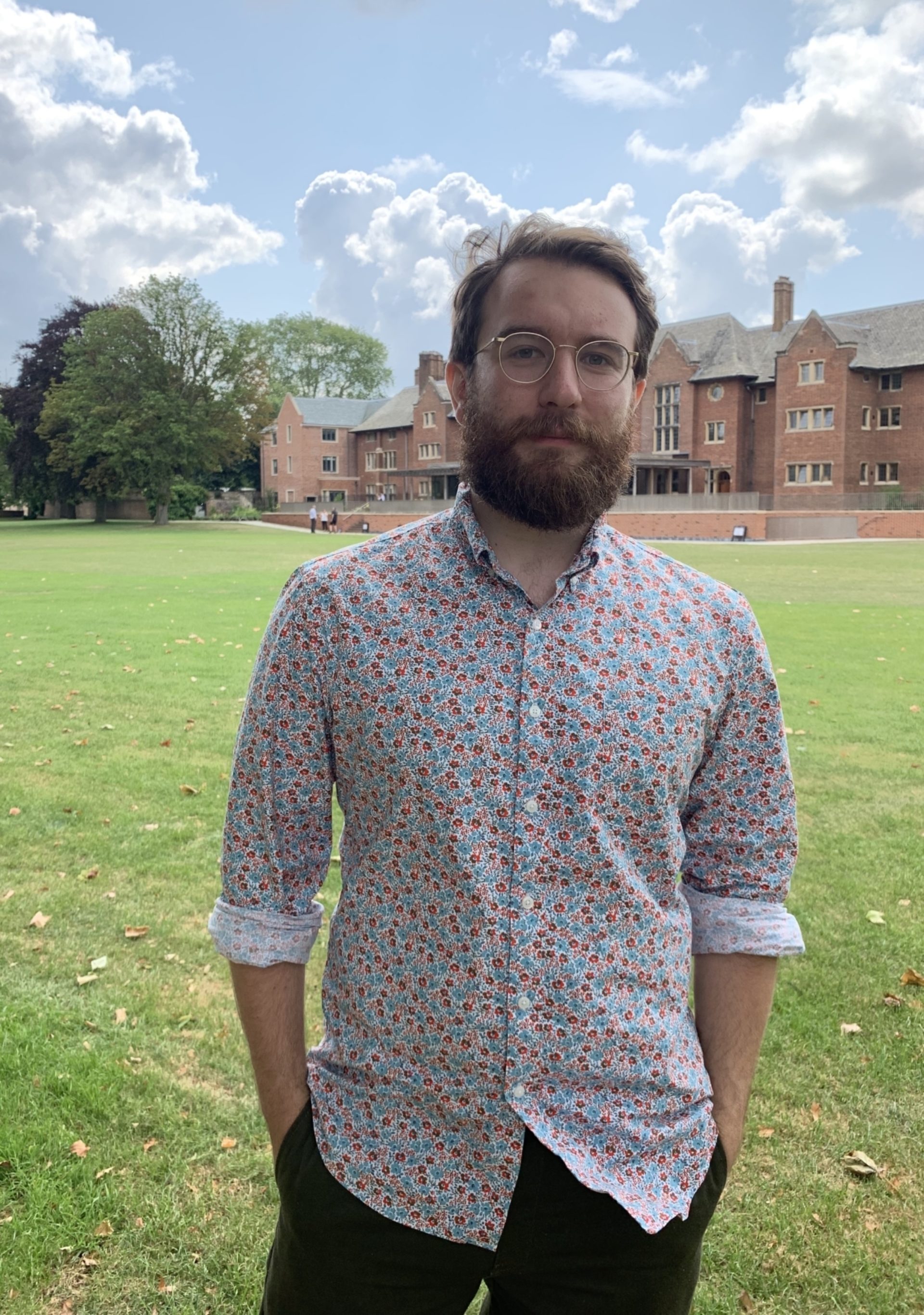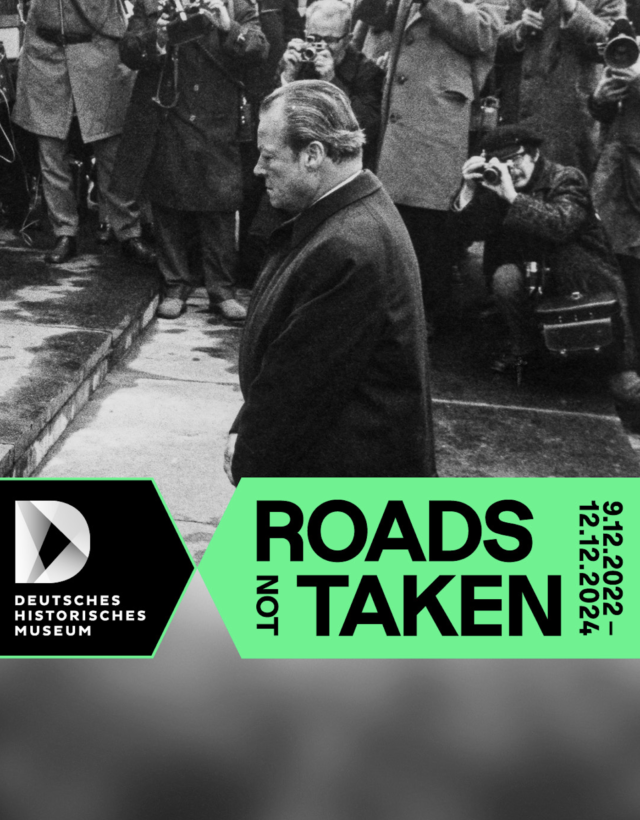
During their time in power, the Nazis used citizenship as a tool for inclusion and exclusion on an unprecedented scale. Hundreds of thousands of individuals as well as political opponents were stripped of their German citizenship and rendered stateless. The National Socialists also altered naturalisation procedures, introducing racial and eugenicist criteria. The consequences of these changes were still being felt after the regime ended and the Federal Republic of Germany was established in 1949.
Landecker Lecturer Dr Nicholas Courtman's research explores the unsettling continuities of this period and the naturalisation laws that followed in the Federal Republic of Germany after 1949.
We spoke to Dr Courtman on the fourth anniversary of the Fourth Amendment to the German Nationality Act (§ 15 StAG). In effect since August 2021, it enables victims of Nazi persecution who were forcibly stripped of their German nationality, as well as their descendants, to obtain German citizenship under simplified conditions – a significant step towards legal recognition. Nicholas Courtman discusses how outdated legal categories, a lack of historical sensitivity and insufficient resources have affected the amendment’s implementation.
Four years after the reform of the Nationality Act – what is your assessment?
When the Nationality Act was reformed in 2021, my emotional reaction was one of mixed feelings. On the one hand, I was overjoyed that the German government was extending naturalisation rights to so many descendants of groups who had been persecuted and subject to citizenship-related injustice or discrimination by the Nazi regime. These individuals’ ancestors, those individuals who had suffered the persecution and discrimination first-hand, had in many cases never enjoyed legal rights to naturalisation or entitlements to privileged treatment under the legal system of the Federal Republic.
Through the research that I have carried out in archives throughout Germany during my Landecker Lecturer research fellowship, I’ve found many instances in which such individuals tried to gain German citizenship after 1945 and were denied. One of the examples relates to a file of a German-speaking Sintiza from the Sudetenland, who had been excluded from the mass naturalisation of the Sudeten Germans in 1938 on the grounds of her ‘foreign-species blood’ (artfremdes Blut). When she tried to gain recognition as a German citizen in 1952 in Hannover, the authority informed her that the mass naturalisation of 1938 had not included her due to her ‘foreign blood’, and that naturalisation according to post-war law was out of the question because she was illiterate and thereby could not fulfil the ‘cultural requirements’ for naturalisation. The 2021 reform grants the descendants of this woman a right to German citizenship, if they do not already possess it and want to have it. I am still depressed when I consider that this law came far too late for this woman herself.
Since the reform was passed, I have had only infrequent and occasional contact with descendants who are placing applications through the new § 15 StAG. Through conversations with colleagues who are more directly involved in supporting applicants through the process, I did hear of some concerning issues with the Federal Office of Administration’s (Bundesverwaltungsamt, BVA) interpretation of the relevant legislation. These included an attempt to deny that descendants of Jewish or Sinti ethnic Germans from ‘resettlement areas’ (Umsiedlung) had a right to naturalisation under § 15 StAG, as well as the denial of this right to individuals adopted by forcibly denaturalised former German citizens under Art. 116(2) GG. I have however been informed that the BVA has since given up both of these positions.
Speaking from my perspective as a historian who has had the privilege over the last few years to spend time delving deeper into the administration of citizenship and naturalisation in both the Federal Republic and the Nazi era, I would argue that an important future step in the application and interpretation of § 15 StAG should deal with how the provision relates to forms of exclusion and discrimination in citizenship under the Nazis that are still hardly understood in historical research.
During the Nazi era, naturalisation authorities instituted eugenic and racial-hygienic assessment procedures into the naturalisation process with the goal of excluding the ‘genetically inferior’ from naturalisation – this covered not only Jews and Sinti and Roma, but also all other individuals of ‘non-European blood’ and individuals who were judged to be carriers of ‘hereditary defects’ or disabilities. The existence of these rules, which were established through sub-legal alterations of unpublished administrative guidelines, is unknown even to most historians of citizenship in Germany, let alone to most of today’s state officials who are responsible for dealing with the law.
The legacy of these rules supports the argument that § 15 StAG should also apply to the descendants of people who were excluded from citizenship on racial or ableist grounds - for example, Black or other racialised people of colour who lived in German territory without citizenship before 1933, as well as individuals with disabilities and their descendants.
What significance does the legal reform have for those affected?
This answer is going to vary from descendant to descendant. Many view naturalisation through an entirely practical lens, focusing on the opportunities and possibilities that a European passport brings, and will emphasise this over any more profoundly felt matters of identification with Germany or as Germans. Many others, however, view the German government’s extension of a right to naturalisation as an important gesture of recognition for the harm to which the German state subjected their ancestors; some may even interpret and accept the right to naturalisation as a move towards reconciliation between themselves and the German state.
One thing I can say is that many descendants who are entitled to naturalisation as a result of the 2021 reform, and who were previously excluded, are not entirely aware that they were previously excluded, that a struggle was necessary to achieve the current legal reform, or that there were early demands for the granting of the rights that were delivered in 2021 already in the first decade of the FRG’s existence. For those who want to learn more about how this was handled in relation to the demands of Jewish groups in particular, I can point towards the online video of a lecture I gave on this topic at the Leo Baeck Institute in London at the end of March this year.
What are the biggest problems in implementing the law?
Some initial issues stemmed from how the BVA interpreted the law.
There have also been some problems that result from difficulties in having to retroactively apply the legal categories of an earlier time – for descendants of Jewish members of German minorities where mass naturalisations or resettlements were performed, it is necessary to demonstrate that their ancestors viewed themselves as members of the German people – in German, “sie müssen sich zum deutschen Volkstum bekannt haben”. The relevant piece of postwar legislation for judging this, § 6 of the Gesetz über die Angelegenheiten der Flüchtlinge und Vertriebene, was long interpreted by West German courts as requiring a univocal and singular national identification. Individuals who may have held multiple, co-existing national identities or allegiances are difficult to fit into the legal framework still in use. This has led to problems with the naturalisation of descendants of German-speaking Jews from the regions mentioned, especially when their ancestors also spoke Yiddish at home. In some cases, BVA staff questioned whether these ancestors truly identified as part of the German people, or rather as part of the Jewish people. But I have been informed that statements such as these have been flagged as problematic and are hopefully no longer appearing.
Aside from this, on a much more banal level, a large problem in implementation is likely to be found in the challenges for descendants in finding the necessary documentation. Many of the descendants can’t speak or read German, let alone any of the other European languages necessary to converse with the archives in which the documents relating to their ancestors might now be located (which for example could be Czech, Polish or Latvian). This creates a great deal of work for the case workers in the BVA, who are already dealing with a huge number of applications, especially since October 7th, who need to try and find the necessary documentation.
I have heard that there is a great deal of variability from case worker to case worker in terms of the amount of extra work that they are willing or able to do to support individual applicants in locating or securing such documentation. One might believe that one should be able to expect these case workers to provide applicants’ with help securing the relevant documents, especially in relation to more straightforward cases. One such straightforward case would be an application from the grandchild of a German Jewish woman who married a foreign man in 1937 and thereby lost her German citizenship. For this case, the BVA should only need documents proving that the grandmother was a German citizen, that she was classified as Jewish by the Nazi regime, and a copy of her marriage certificate, accompanied by birth and marriage certificates for the applicant’s parents, as well as the applicant’s own birth certificate. Assisting in finding some of these documents in relevant German archives should not be too great a challenge.
But things seem a bit different when one considers that many of the cases included in the new § 15 StAG demand a lot from the case workers, namely, an intimate and detailed understanding of different aspects of Nazi citizenship and naturalisation policy throughout occupied and annexed Europe, topics that most specialist historians and legal professionals would have difficulty getting to grips with. Most of the case workers at the BVA do not have this kind of specialist background, nor does the BVA pay them the salary that such specialist qualifications would demand.
Why does the Federal Office of Administration take so long to process the applications?
I assume that a large part of this has to do with the complexity of many of the individual cases, the lack of adequate documentation. But probably for the moment, the most important factor is understaffing, especially in face of the astronomic increase in the numbers of applications since the 7th of October, and I can assume that we are going to see increases in the numbers of applications from other parts of the world, especially the USA, if we have not seen them already (the BVA hasn’t made any announcements about numbers of applications received since the American election in November 2024, or since Trump’s assumption of power).
What does this mean for the people who are waiting for their German citizenship?
For many it means frustration, the delaying of important life plans, probably also feelings of resentment and anger towards the German state for taking such a long time to grant something which it had promised in the spirit of Wiedergutmachung; such delays are probably experienced as especially disappointing for those first-hand victims of Nazi persecution who have made the decision to (re-)acquire German citizenship.
What needs to happen to ensure better implementation of the law?
As far as I am aware, the federal government already took what is one of the most important steps towards ensuring better implementation of the law several months ago, when it recruited numerous new employees to work in special task forces that are dedicated to processing the backlog of applications and keeping up with the huge new numbers of applications coming in. This move by the government – finding the budgetary resources to employ enough case workers to try and keep up with the numbers of applications – is an extremely welcome and important one.
As long as I am still awaiting the internal documents from the BVA relating to their interpretation and application of the relevant legislation (Art. 116 Abs. 2 GG and § 15 StAG), I cannot say with certainty whether there are improvements that could be made in relation to the training materials that they provide their case workers with. I would however not be surprised if there was some confusion regarding which groups were subject to what kinds of exclusionary and discriminatory measures under Nazi rule, and by extension, which groups of descendants and individuals enjoy rights to naturalisation under the new legislation. On this point, it would make sense for the BVA to work together with scholars with the relevant historical and legal expertise to provide some kinds of training or explanatory documents.


